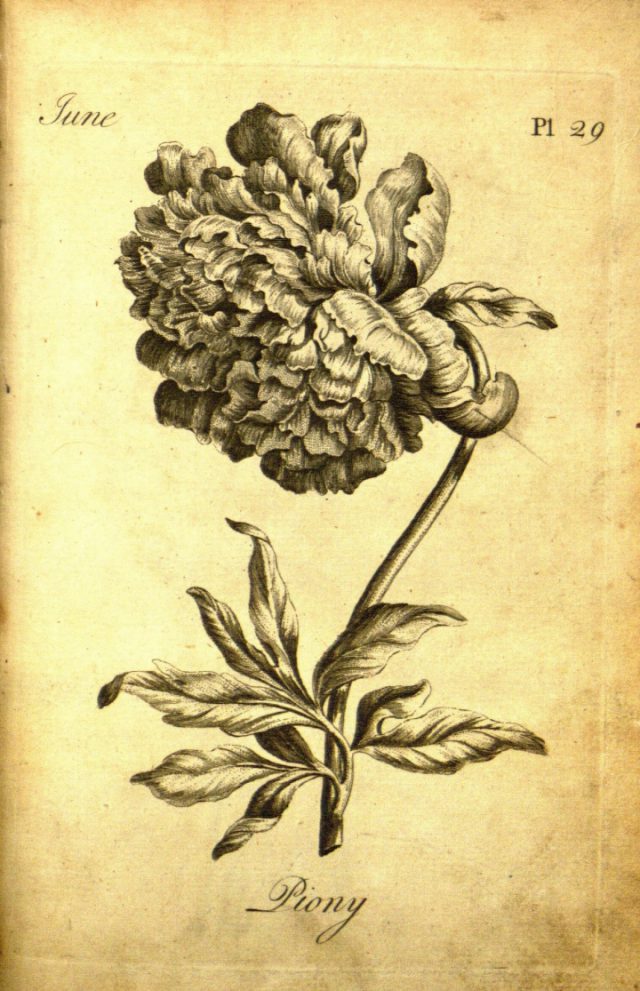From Hyperallergic:
Amy Pool was perusing a book on the history of botanical illustration when a citation for an 18th-century title caught her eye. A plant taxonomist at the Missouri Botanical Garden, Pool searched for the entry, Robert Sayer’s The Florist, in the garden’s library catalogue, curious to see if it had a copy. It did, and the book she found turned out to be a coloring book for adults — a centuries-old precedent of the ones being published today in a seemingly unstoppable trend. As it title suggests, The Florist contains engraved illustrations of flowers — 60 plates of them, from a demure-looking peony to a dancing iris.
Printed in London around 1760 by the publisher Robert Sayer, The Florist represents one of the earliest examples of coloring books found yet. It predates what some consider the first children’s coloring book, Kate Greenaway’s The Little Folks’ Painting Book, which the McLoughlin Brothers published in 1879. But it arrived over a century after the 1612 and 1622 two-part release of Albion’s Glorious Ile, a series of maps by engraver William Hole that nobles apparently loved to hand-color.
Link to the rest at Hyperallergic

That doesn’t look like something that would lend itself to coloring, at least in the ways today’s fans use their coloring books.
True, but I want one nonetheless. 🙂